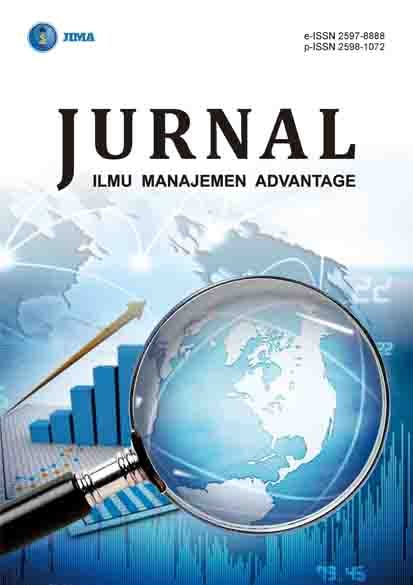Aspects of Micro Business Market Development Using the Friedman Test and Categorical Test Approaches
DOI:
https://doi.org/10.30741/adv.v8i2.1401Keywords:
Categorical Test, Friedman Test, Market Expansion, Micro BusinessAbstract
The problem faced by the research team is how to properly process market expansion for micro businesses. The research location is in Sidoarjo Regency, East Java. In the six sub-districts, there are many micro business actors who have the potential to develop but are constrained in mastering important aspects that interact with the governance and management processes of their businesses. The research sample was 69 businesses engaged in the food, beverage, and health sectors. The data testing methods used were the Friedman test and the Categorical test. The Friedman test aims to find the level of relevance and needs of the aspects used as study materials, then the Categorical test to determine the map of the aspects used as study areas, so that problem points can be seen on the quadrant map in a focused manner. The research method uses a home visit model. The purpose of this study is to help home business actors improve their product management management, so that they can attract buyers. The findings of this study are known to have five main aspects that hinder the development of 69 micro businesses in market expansion, i.e. improving packaging, utilizing technology, expedition networks, sales networks, and using brands.
Downloads
References
Ahmadiyah, A., Sarno, R., Anggraini, R., Ariyani, N., Munif, A., & Hidayati, S. (2011). Pendampingan Pengurusan Ijin Edar dan Sertifikasi Halal Produk Usaha Mikro dan Kecil. Jurnal Sewagati , 6(3), 389–396.
Ananda, A. D., & Susilowati, D. (2017). Pengembangan usaha mikro kecil dan menengah (umkm) berbasis industri kreatif di kota malang. Jurnal Ilmu Ekonomi, 1(1), 120–142.
Ariani, A., & Utomo, M. N. (2017). Kajian Strategis Pengembangan Usaha Mikro Kecil Dan Menengah (UMKM) Di Kota Tarakan. Jurnal Organisasi Dan Manajemen, 13(2), 99–118.
Brata, I. (2016). Pasar Tradisional di Tengah Arus Budaya Global. Jurnal Ilmu Manajemen (JUIMA), 6(1).
Hartati, N. (2014). Intellectual Capital Dalam Meningkatkan Daya Saing: Sebuah Telaah Literatur. Jurnal Etikonomi, 13(1), 51–68.
Husaini, F., & Hutar, A. N. R. (2022). Analisis Faktor Kegagalan Wirausaha: (Studi Kasus Pada Usaha Kecil Menengah). Juremi: Jurnal Riset Ekonomi, 2(1), 119–134.
Irawan, D. (2020). Peningkatan Daya Saing Usaha Mikro Kecil Dan Menengah Melalui Jaringan Usaha. Coopetition: Jurnal Ilmiah Manajemen, 11(2), 103–116.
Irianto, A. (2015). Pemanfaatan Social Media Untuk Meningkatkan Market Share UKM. Jurnal Teknomatika, 8(1), 1–12.
Kartikasari, D. (2021). Pentingnya Peranan Internet Dalam Distribusi Pemasaran Produk UMKM. Jurnal Ilmiah Manajemen, Organisasi Dan Bisnis, 10(1), 53–58.
Lewandowska, M. S., Szymura, T. M., & Gołebiowski, T. (2016). Innovation complementarity, cooperation partners, and new product export: Evidence from Poland. Journal of Business Research, 69(9), 3673–3681.
Liedholm, C., & Mead D. (2013). Small Enterprises and Economic Development: the Dynamics of Micro and Small Enterprises (1st ed., Vol. 1). Routledge.
Mayana R, & Santika T. (2020). Pengembangan Produk Indikasi Geografis Dalam Konteks Sharing Economy Di Era Disrupsi Digital. Jurnal Litigasi, 21(1), 128–146.
Munawarah A, Janah A, Oktarini E, & Khatimah H. (2022). Peran Ekonomi Digital Bagi Perkembangan Pasar Modern Indonesia. Jurnal Al-Aflah, 1(2), 124–133.
Rifin, A. (2019). Determinants of Micro and Small Enterprise Food Industry Market Expansion in Indonesia. Indonesian Journal of Business and Entrepreneurship, 5(3), 215–222.
Santoso, S. (2016). Panduan lengkap SPSS versi 23. Elex Media Komputindo.
Santoso S. (2019). Menguasai SPSS versi 25. Elex Media Komputindo.
Sembiring, R. A., & Subekti, T. (2021). Analisis aktor dalam tata kelola Usaha Mikro Kecil Menengah (UMKM) Kota Batu untuk kualitas internasional. Jurnal Ilmiah Ilmu Sosial, 7(1), 31–44.
Setiawati, S., Retnasari, M., & Fitriawati, D. (2019). Strategi Membangun Branding Bagi Pelaku Usaha Mikro Kecil Menengah. Jurnal Abdimas BSI, 2(1), 125–136.
Sitorus, A. P. (2018). Politik Hukum Perlindungan Usaha Mikro Kecil Menengah (Umkm) dalam Masyarakat Ekonomi Asean. Doktrina: Journal of Law, 1(2), 125–144.
Sri, M., & Ahmad, Y. (2017). Peluang dan Tantangan Pengembangan Usaha Mikro Kecil Menengah (UMKM) Dari Berbagai Aspek Ekonomi. Jurnal Ilmiah Manajemen Dan Bisnis, 2(1), 181–196.
Sukarnoto, T., Nurjati, N., & Rani, V. (2021). Era Digitalisasi Media Pemasaran Online Pengembangan Usaha Mikro Kecil. Etos: Jurnal Pengabdian Masyarakat, 3(1), 1–13.
Sumaryana F. (2018). Pengembangan Klaster UMKM Dalam Upaya Peningkatan Daya Saing Usaha. Jurnal Ilmu Sosial Dan Ilmu Politik, 8(1), 58–68.
Syukri, A., & Sunrawali, A. (2022). Digital Marketing Dalam Pengembangan Usaha Mikro, Kecil, dan Menengah. Jurnal Kinerja, 19(1), 170–182.
Wahyudi R. (2019). Strategi Pengembangan Pasar Tradisional Dalam Meningkatkan Kepuasan Pedagang. Jurnal Pengembangan Wiraswasta, 21(1), 37–52.
Wardhana A. (2015). Strategi Digital Marketing dan Implikasinya Pada Keunggulan Bersaing UKM di Indonesia. Seminar Nasional Keuangan Dan Bisnis IV, 327–337.
Zastempowski, M. (2022). What Shapes Innovation Capability in Micro-Enterprises? New-to-the-Market Product and Process Perspective. Journal of Open Innovation: Technology, Market, and Complexity, 8(1), 1–26.
Downloads
Published
How to Cite
Issue
Section
License
Copyright (c) 2024 I Putu Artaya, I Gede Arimbawa, R. Agus Baktiono

This work is licensed under a Creative Commons Attribution-NonCommercial 4.0 International License.










